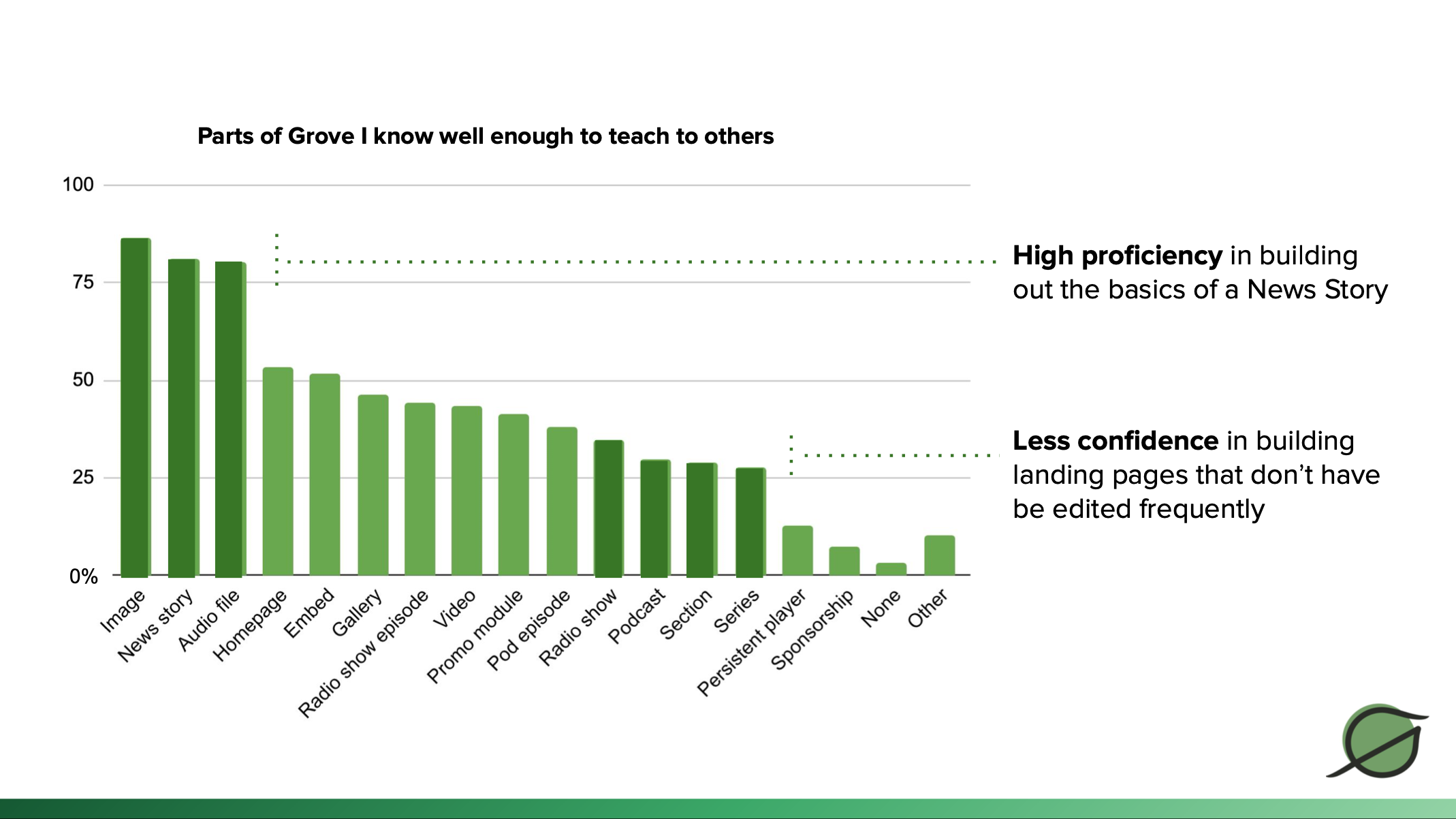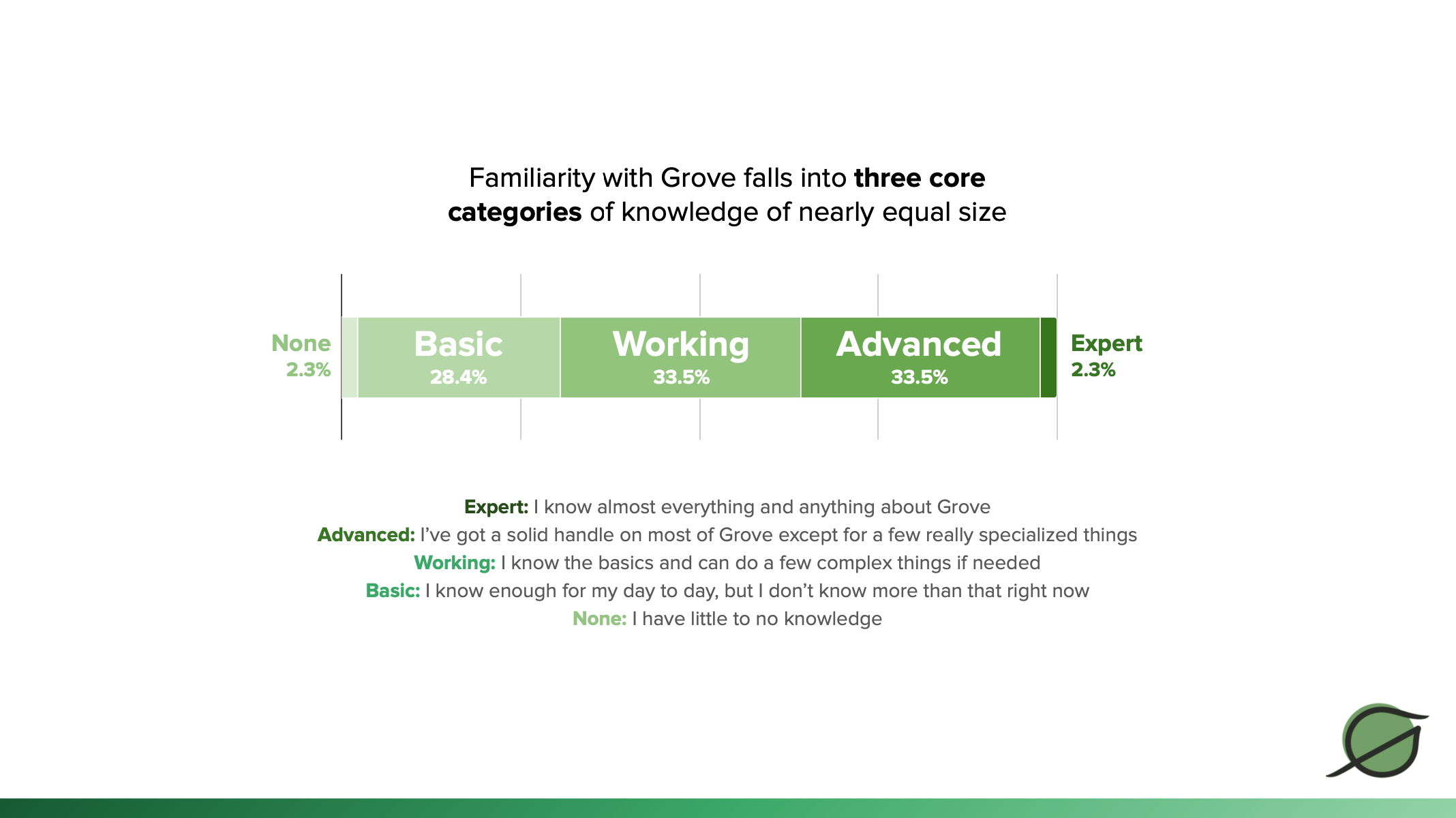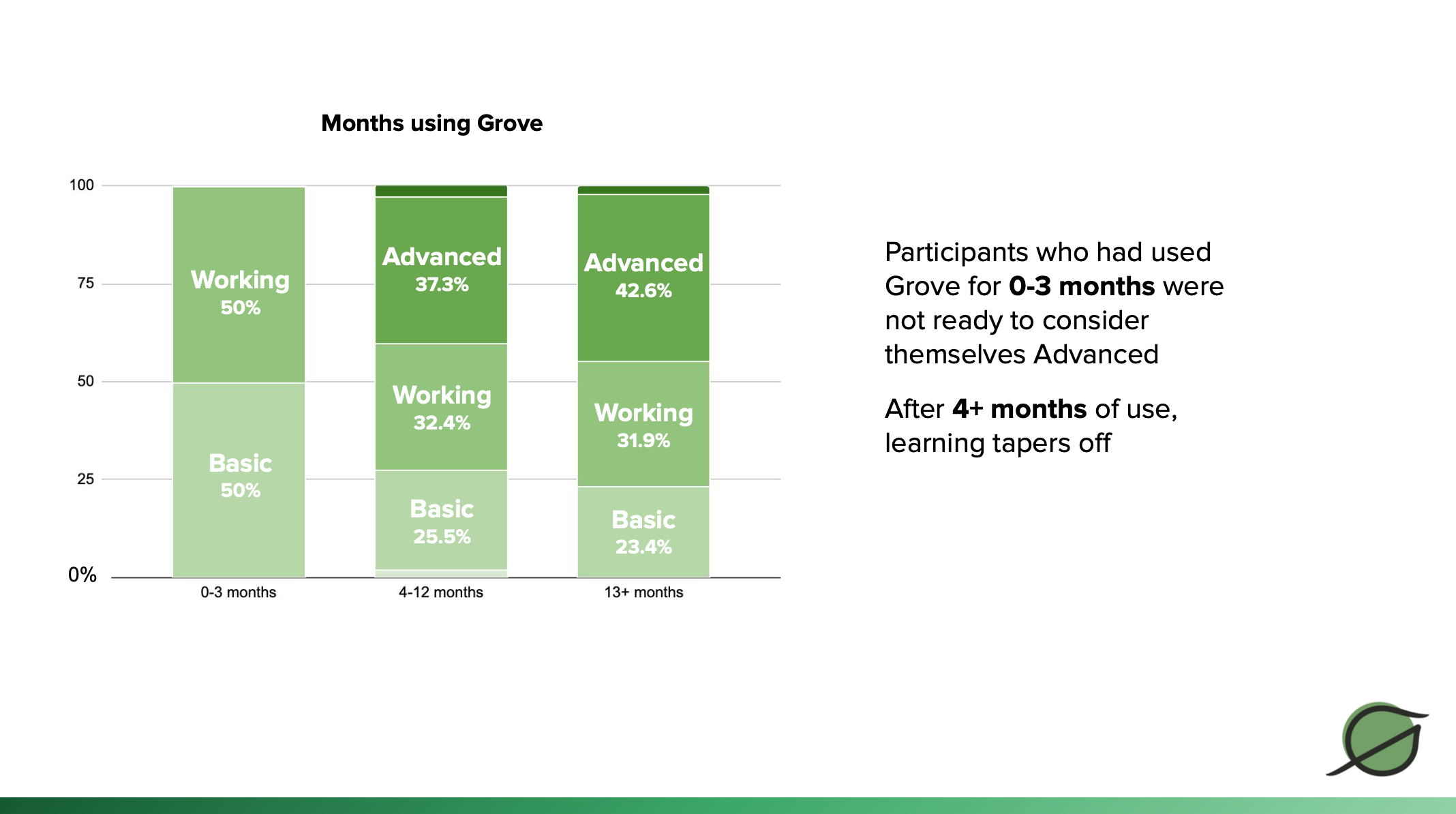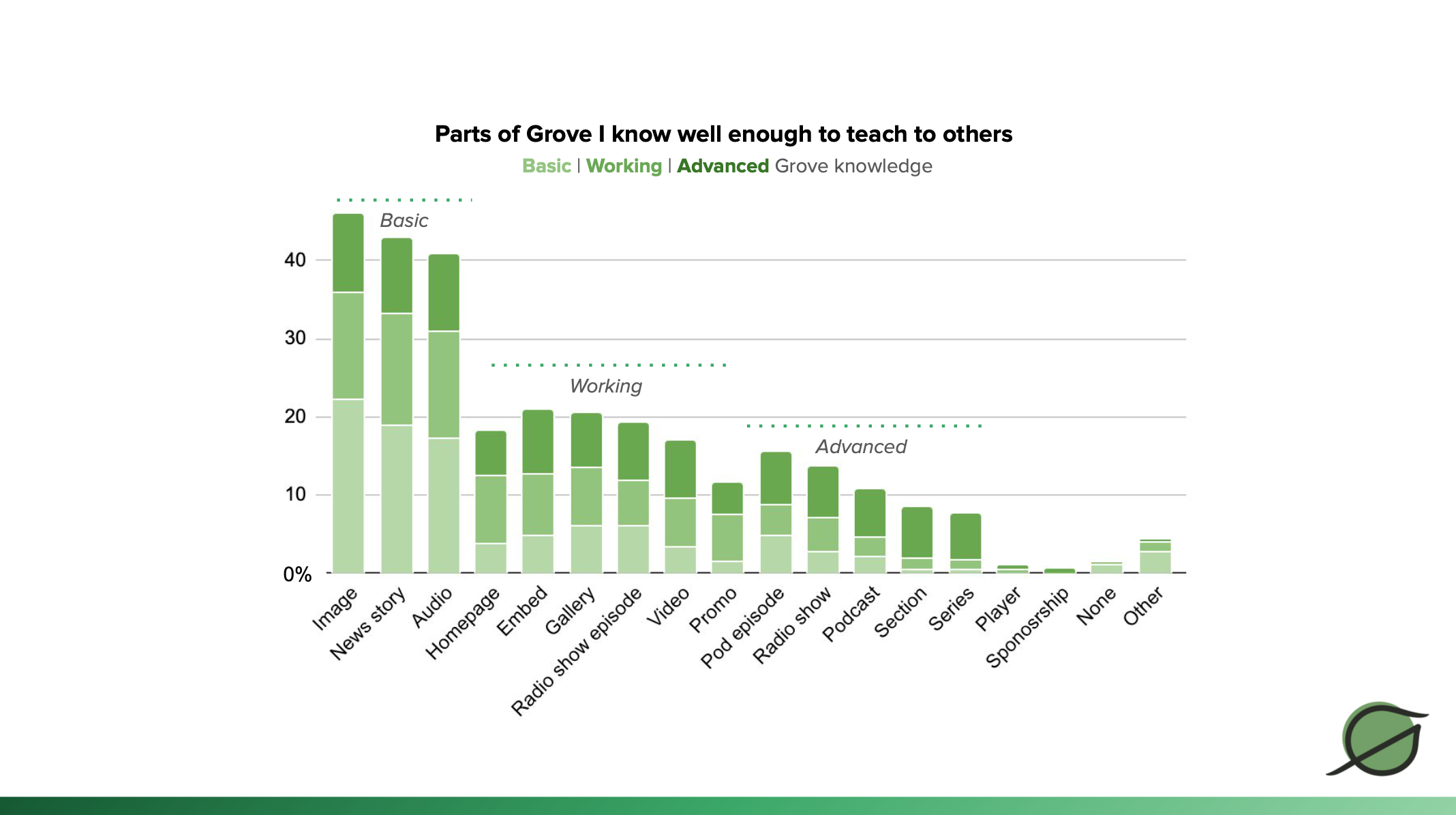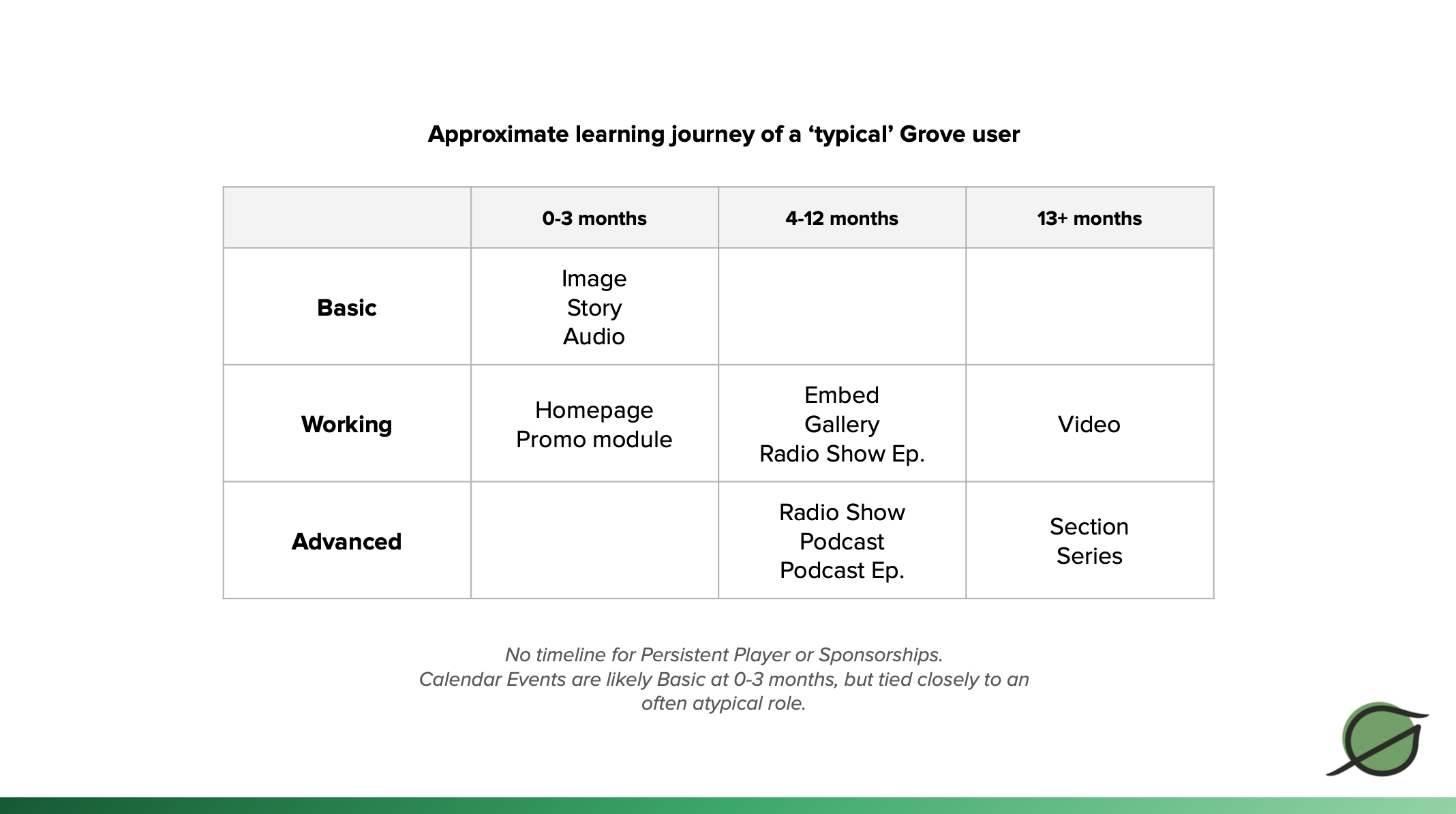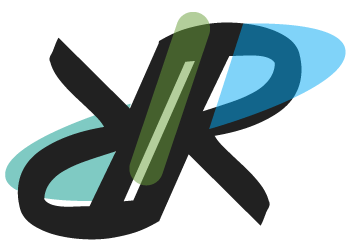DESIGNER & RESEARCHER, JAN 2021 - PRESENT
NPR migrated 190+ radio station sites to a modernized third-party Content Management System (CMS.) The vendor provided the basic design, but we added our own enhancements and named the system Grove.
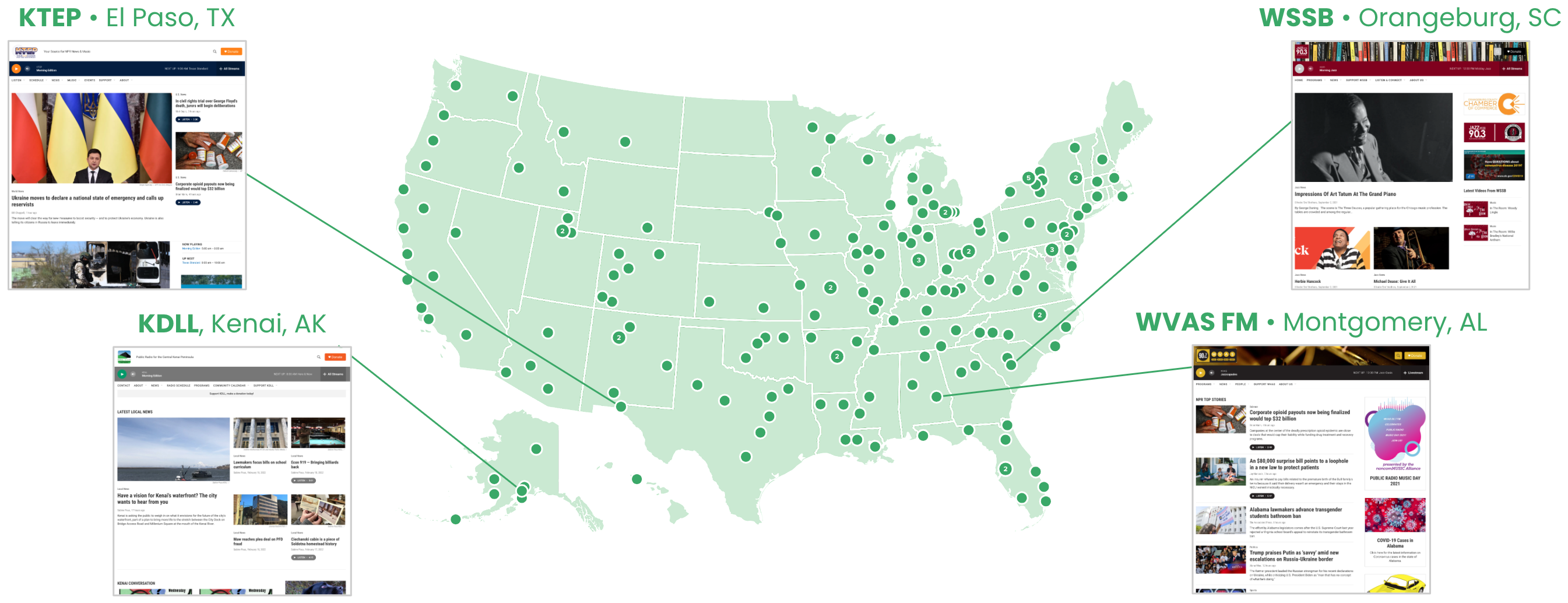
NPR radio stations are unique. Some play music almost exclusively while some serve as the only local news in their area. My product manager asked for help prioritizing feature development. I approached the research for this three ways.
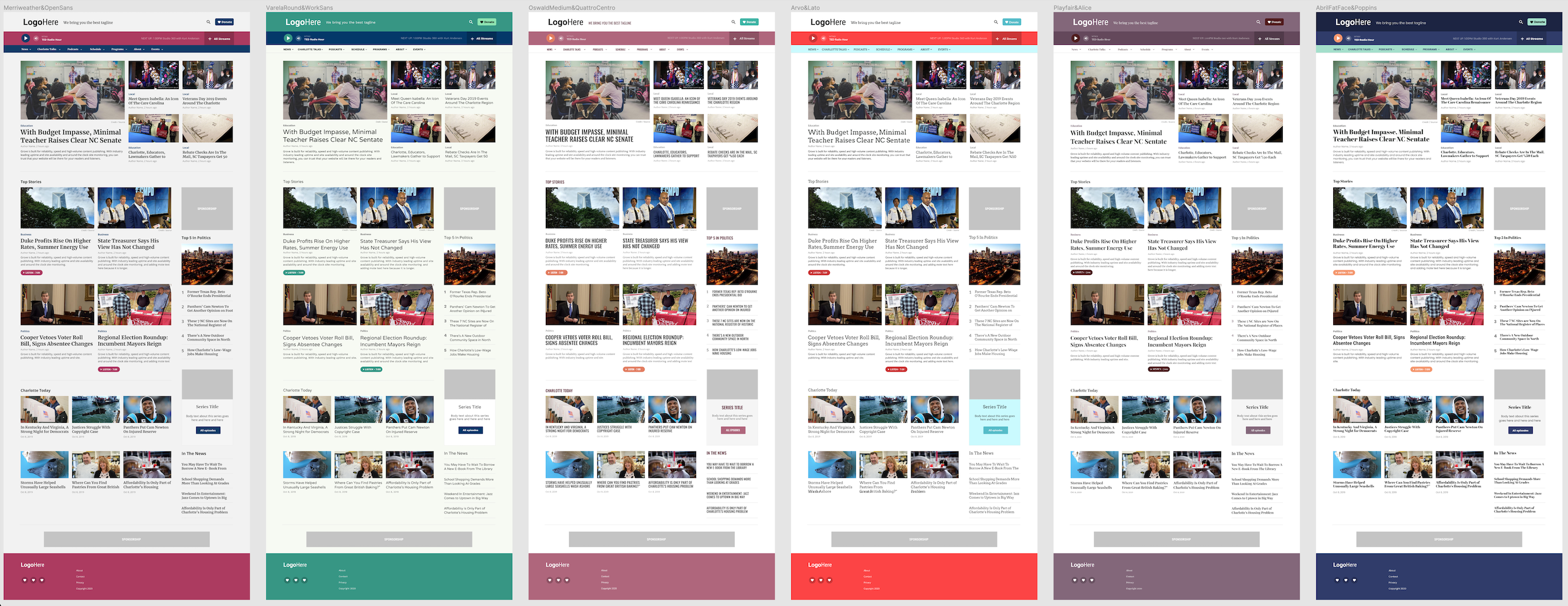
I first conducted a review of secondary data, auditing the prior four months of ticket requests and questions raised in Office Hours. Customization was a big theme, so I explored visual improvements such as color schemes, font alternatives, and module enhancements (above.)
Pros: Readily accessible data, quick turnaround
Cons: Self-selected user base, environment primed for obvious bugs
Continuous discovery
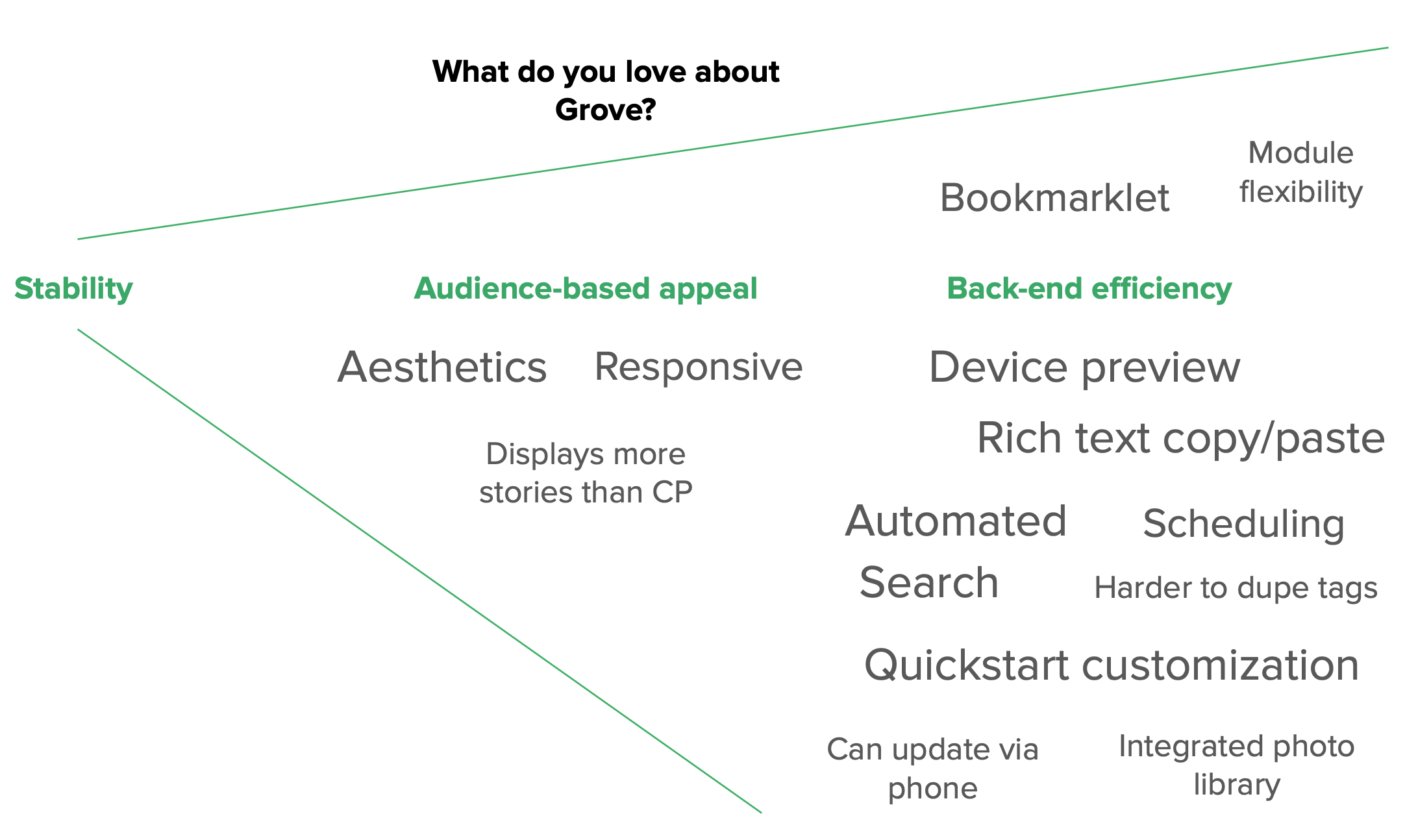
I then pivoted to continuous discovery and invited my team observe a weekly interview with a Grove user. After 10+ interviews, it was clear what users really loved about Grove was how it made their work faster, and they wanted more of that. I plotted out the steps of a common workflow in Grove and identified 13 high-impact wins to save time. (One change saved 6.5 hours/year per person.)
Pros: Direct and recurring access to real humans, encourages team investment
Cons: Requires lead time to operationalize, can lead to slow-forming insights
A learning framework
Our ticketing system was filled with people wanting custom features, but our interviews included people that were quite happy with Grove. I sent out a survey to better understand user groups. 55% of stations participated.
The results helped us craft trainings and support documentation in the short term. In the longer term it gave us a starting point for curating permissions settings based on realistic personas.
Pros: Data at scale, fast reach
Cons: Numbers can lie, tells you what but not why
Ultimately, mixed methods give the clearest picture, so all of the above combined formed a powerhouse of knowledge about our users.
